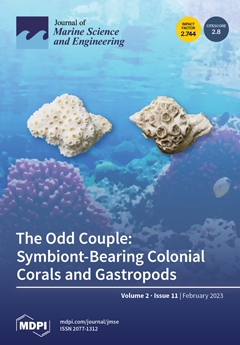High-value sea cucumber species are overexploited, and the focus of fishing has shifted to low-value species, e.g.,
Holothuria (Halodeima) atra. In this study, the population of
H. atra was investigated in three different habitats: a seagrass habitat, a seaweed habitat, and bare sand,
[...] Read more.
High-value sea cucumber species are overexploited, and the focus of fishing has shifted to low-value species, e.g.,
Holothuria (Halodeima) atra. In this study, the population of
H. atra was investigated in three different habitats: a seagrass habitat, a seaweed habitat, and bare sand, at an intertidal zone of Lidee Island, Mu Ko Phetra National Park, Satun Province, Thailand. The habitat type was the predictor which had a significant impact on the density and frequency distribution of the body length of
H. atra individuals.
H. atra was only found in the seaweed and seagrass habitats. The highest density of this species, 91.1 ± 9.6 inds 100 m
−2, was found in the seaweed habitat. The frequency distribution of the body length of
H. atra individuals in the seagrass habitat showed no significant change throughout the study period, but the mode of the length frequency distribution in the seaweed habitat gradually rose from 9 to 22 cm from January−September 2019. Asexual reproduction was the major source of recruitment. The occurrence of recently fissioned individuals was slightly higher in the seaweed habitat than in the seagrass habitat (6.0 ± 1.1% and 2.2 ± 0.6%, respectively). This study showed that
H. atra was most abundant in the seaweed habitat, which is likely because of the greater availability in this habitat of food sources, microhabitats, and protection against sun irradiance, desiccation, and stress during low tides.
Full article





